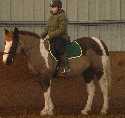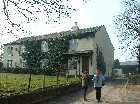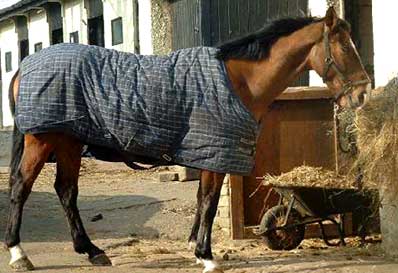Mind Streaming
John Coxon's Online Journal|
Archive Search |
| Links |
|
and s-integrator |
Saturday, March 01, 2003
A lot of people own cameras, and for most ,it is a handy tool for recording family events like holidays, birthdays and the like. Snapping involves shooting such things, and it depends on your awarenesss of light, framing and other variables how well you do. Who hasn't got back, from the processors, a blank film, because they forgot to take the lens cap off, forget to load a film, or took pictures in what obviously, to knowing others, was poor light and it seemed bright enough to you! Ever had those pictures where, mysteriously, vital parts of family members had been cut off, where tree branches sprouted out of someone's head or worse. Ever got back photos with that dreaded 'daytime partial eclipse', that pink crescent that tells you, you should have kept your finger off the lens? Ever been to an evening football match, or a concert, and wondered why all you got back were predominently black photos with a tiny speck of light, centre, when you expected to see your idols as your eyes saw them in the stadium? Essentially, for family archive and communication purposes we got one of a few vital shots that were asked for. Such a lovely place also provided an obvious context picture, as Angela and Naomi dutifully walked up past the old farmhouse to the stables together. I shot a lot of other interesting things, the tidy derilection common to farm premises, old obscelete machinery and buildings, and patterns and textures cried out for capture, as, with an open mind, I wandered around. With thirty pleasing images, I went back to the car park to wait for Angela and Naomi. As I sat there, something awesome happened. Now, photographers have moments when they could weep because they aren't carrying a camera and there is something unique happening for a moment to capture right in front of them. They blink, and it is gone forever. There are some very rare birds in Britain, but the few of this particular fish-loving species, still tend, as solitary predators, to hang around, even urban areas, where there are stretches of water or domestic ponds which offer them stolen fast food. (You have to net over your outdoor goldfish pools as insurance against this elegantly beautiful, but increasingly rare creatures.) Suddenly, on the pitched roof of a nearby bungalow, this graceful, slow wing-beated individual came into land on that tiled roof right in front of me. Out of the car, quietly, and over the road. "Don't move yet", I whispered. Three shots and then it was off, with those languid wing beats, waving complete indifference to me; left breathless and speechless. Here is the result, not brilliant, but well, a cherished record of a really special moment. I have photographed four signs from my immediate neighbourhood as examples of the genuine pub sign. The Nelson, on Bolton Road, bears the image of Admiral Nelson, a national hero after his historic naval victories, hence a very popular pub name in our country even today. WANT TO SEE MORE PUB SIGN PICTURES? Each of my photographs here is hyperlinked to a different web site featuring high resolution images of hand painted pub signs to illustrate the range of this art genre. There are 323 in total! Clicking on the Nelson sign will take to a specialist site with photographs and outlines of the historical origins of the pub names of 245 establishment in the midlands area. Clicking on the Odd Fellows picture takes you to the Green Lion website with 26 examples of the art and there you can access an astonishing private data base of pub names with 60,000 name entries. Click on the Golden Lion image for 14 pub signs from the Liverpool area. Click on the Unity Brook image to access 26 pub signs from the business site of a sign writer whose work includes pub sign making. Click on the Holts' beer mat to access another sign write business website with a further twelve examples of this art form.
Tuesday, February 25, 2003

What is this?
Click on the image to find out what this crop was originally taken from from.


johncoxon 5:14 PM - [Link] - Comments ()
...
ALWAYS CARRY A CAMERA
Sunday, February 23, 2003
I gave all my 35mm SLR camera equipment to my youngest son, Tom, for his college art work, including an awesome telephoto lens that I sometimes still yearn for. As well, I lost the facility to have long exposure times and control over shutter speeds, but the instant gratification of my new Fuji electronic '210' equivalent, zoom digital camera, and the abiltiy to review what I had just shot, to print out pictures myself, and send them as prints, or post them, as files, to friends over the Net, more than compensates.
Just recently, Angela's young daughter, Naomi, was desperate that I accompanied them, last Sunday, to the local riding stables, particulalry as she had just learned her father, a combat soldier, now living in Germany, was flying, very soon, to Kuwait, and she just had to send him pictures of her riding lesson.
Now I think of myself as a bit of a photographer, and we are very blessed, as is the fair City of Salford, that we are only a few miles drive from the countryside and , from home, just a few minutes, by car, from the picturesque Ryders Farm, now a local equestrian centre.


Now even though it was a sunny Sunday morning, it was really cold and my feet got restless. So, camera in hand, I decided to explore the old farm and then an image yelled out "Take me!", "I'd look great on a chocolate biscuit tin" and so I shot this. I was pretty impressed that a digital camera could produce an image as sharp as this one.

johncoxon 2:29 AM - [Link] - Comments ()
...
Hanging, hand-painted pictorial signs have been a common feature of traditional pubs, inns and ale houses for centuries, although more recently, where pubs have been taken over by big leisure corporations, there has been a tendency to invent new pub names and generate signs which suggest history but mock it. Pub sign historians tell us that the pub sign was originally imported by the Romans who introduced the use of relief terracotta signs or tied greenery called 'taberna'to poles to indicate where wine was on sale. This may be where the English word Tavern is derived from. Since the majority of the population were illiterate in the early days, the tradition of a picture with a name for an alehouse goes back to the twelfth and thirteenth century. Swinton is on one of the busy routes out of Manchester to the large industrial town of Bolton, and it is quite surprising just how many pubs are dotted along its route, owned, I may say, by a variety of breweries and some leisure groups. Some like the Golden Lion and the Robin Hood have quite a large section of their pub devoted to family-style restaurant facilities, drawing in extra trade throughout the day and both are owned by leisure groups. The majority of local pubs simply sell drinks and bags of potato crisps, and peanuts or pork 'scratchings' (teeth-crunching roasted pieces of pig skin!) will normally be all that's available at the bar. Of course the salt content of these snacks increases your thirst. There are a large number of takeaways, and typically fast food joints are busiest when the pubs turn out. The Lord Nelson pub is owned by a small family business, Joseph Holts' Brewery which owns, currently, some 127 pubs within a 25 mile radius of the centre of Manchester and was established in 1849. Their beer is brewed in Empire Street in the Cheetham Hill area of Manchester at their Derby Brewery site. Holts' is a public limited company but most of the shares are still owned by family members. Holts' is a community-minded brewery and are charitably associated with supporting Manchester's famous Christies Hospital, celebrated for its treatment and care of cancer patients. One of their directors, when she died, bequeathed her company shares, estimated to be worth some seven million pounds, to Christies.
The Lord Nelson pub is owned by a small family business, Joseph Holts' Brewery which owns, currently, some 127 pubs within a 25 mile radius of the centre of Manchester and was established in 1849. Their beer is brewed in Empire Street in the Cheetham Hill area of Manchester at their Derby Brewery site. Holts' is a public limited company but most of the shares are still owned by family members. Holts' is a community-minded brewery and are charitably associated with supporting Manchester's famous Christies Hospital, celebrated for its treatment and care of cancer patients. One of their directors, when she died, bequeathed her company shares, estimated to be worth some seven million pounds, to Christies. Holts' have preserved most of the original interiors of their pubs and their beers are, in keeping with a long held company policy, some of the cheapest and best value for money around. Typically their pubs are small, often with original deep mahogany bars and furnishings and consist of a softly upholstered 'Lounge' and a livelier 'vault' or public bar . Holts' still deliver in huge 54 gallon 'hogsheads', while modern breweries go for the safer 9 gallon aluminium 'firkins'. Casked Real ale, like Holts' has a shelf life of only three days, but because the beer is good and cheap it doesn't have time to go 'off'! Tom Dempsey, one of the directors boasts that one of his pubs can empty a hogshead in just three hours. A pint of Holts' best bitter is currently a modest £1.10 sterling.
Holts' have preserved most of the original interiors of their pubs and their beers are, in keeping with a long held company policy, some of the cheapest and best value for money around. Typically their pubs are small, often with original deep mahogany bars and furnishings and consist of a softly upholstered 'Lounge' and a livelier 'vault' or public bar . Holts' still deliver in huge 54 gallon 'hogsheads', while modern breweries go for the safer 9 gallon aluminium 'firkins'. Casked Real ale, like Holts' has a shelf life of only three days, but because the beer is good and cheap it doesn't have time to go 'off'! Tom Dempsey, one of the directors boasts that one of his pubs can empty a hogshead in just three hours. A pint of Holts' best bitter is currently a modest £1.10 sterling.  Odd Fellows is typical of a large number of apparently unusual pub names that you'll find around the country but many of them have an interesting history. The Independent Order of Odd Fellows, (or Manchester Union) was a kind of social and benevolent society or fellowship formed to support community members financially and materially in times of hardship. Odd Fellows has its roots way back in time when the members of the old trade guilds were persecuted and outlawed and new, non-trades based benevolent societies were a safer option.Odd Fellows history goes back as far a 1745.
Odd Fellows is typical of a large number of apparently unusual pub names that you'll find around the country but many of them have an interesting history. The Independent Order of Odd Fellows, (or Manchester Union) was a kind of social and benevolent society or fellowship formed to support community members financially and materially in times of hardship. Odd Fellows has its roots way back in time when the members of the old trade guilds were persecuted and outlawed and new, non-trades based benevolent societies were a safer option.Odd Fellows history goes back as far a 1745. The Golden Lion on the same main road illustrates one of the most prolific motifs on pub signs. The White, Red, Black or Golden Lion is one of the most common pub names. This stylised form of the animal is from heraldry. The White Lion was an heraldic reference to King Henry 1 and the Red Lion was the emblem of John of Gaunt, Duke of Lancaster who by the time of his death, 1399, was one of the most powerful men in the realm. It was also the emblem of James 1V of Scotland, who, as James 1, ascended to the English throne in 1603 and apparently insisted that the red lion be put up on our public buildings and this included taverns. Hence its popularity as a pub sign. The White Hart is another common pub name and this animal was the emblem of King Richard 11 who actually made a law obliging London Innkeepers to have their own sign on pain of forfeiting their ale. Pub sign historians explain that early publicans were often former employees of landed gentry and thus showed their allegiance to them by using their heraldic device on their alehouse signs.
The Golden Lion on the same main road illustrates one of the most prolific motifs on pub signs. The White, Red, Black or Golden Lion is one of the most common pub names. This stylised form of the animal is from heraldry. The White Lion was an heraldic reference to King Henry 1 and the Red Lion was the emblem of John of Gaunt, Duke of Lancaster who by the time of his death, 1399, was one of the most powerful men in the realm. It was also the emblem of James 1V of Scotland, who, as James 1, ascended to the English throne in 1603 and apparently insisted that the red lion be put up on our public buildings and this included taverns. Hence its popularity as a pub sign. The White Hart is another common pub name and this animal was the emblem of King Richard 11 who actually made a law obliging London Innkeepers to have their own sign on pain of forfeiting their ale. Pub sign historians explain that early publicans were often former employees of landed gentry and thus showed their allegiance to them by using their heraldic device on their alehouse signs. Some pub names are simply created from a place name or a local landmark or geographical feature. The Unity Brook pub , right next to Rydal Farm ( now a thriving Equestrian Centre ) on the main road, just down from us in the direction of Bolton, is built in a hollow, behind which there is a small brook or stream. This is an example of a pub sign design with a little comedy in it, again a common feature of pub signs.
Some pub names are simply created from a place name or a local landmark or geographical feature. The Unity Brook pub , right next to Rydal Farm ( now a thriving Equestrian Centre ) on the main road, just down from us in the direction of Bolton, is built in a hollow, behind which there is a small brook or stream. This is an example of a pub sign design with a little comedy in it, again a common feature of pub signs.
johncoxon 8:23 PM - [Link] - Comments ()
...